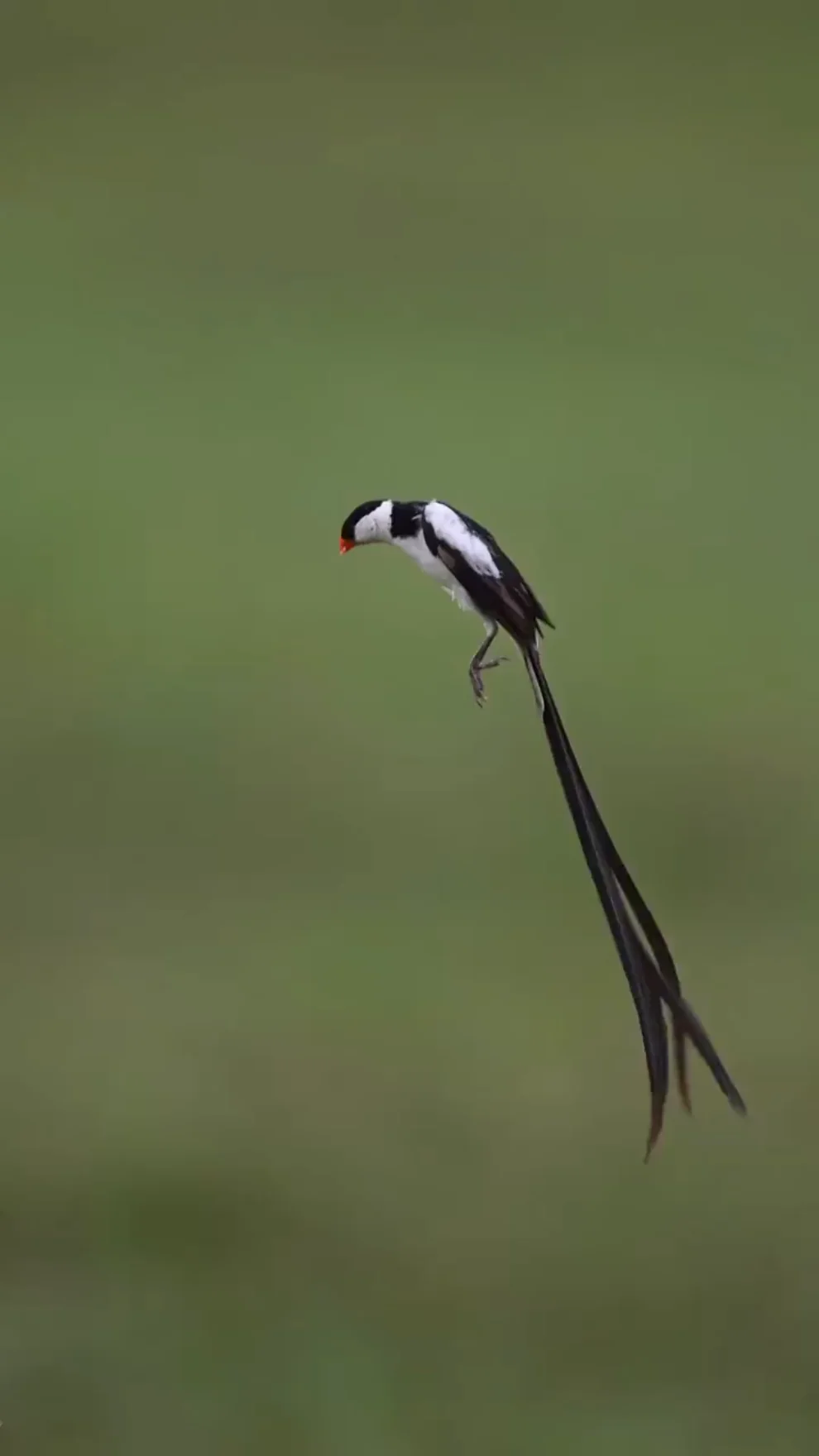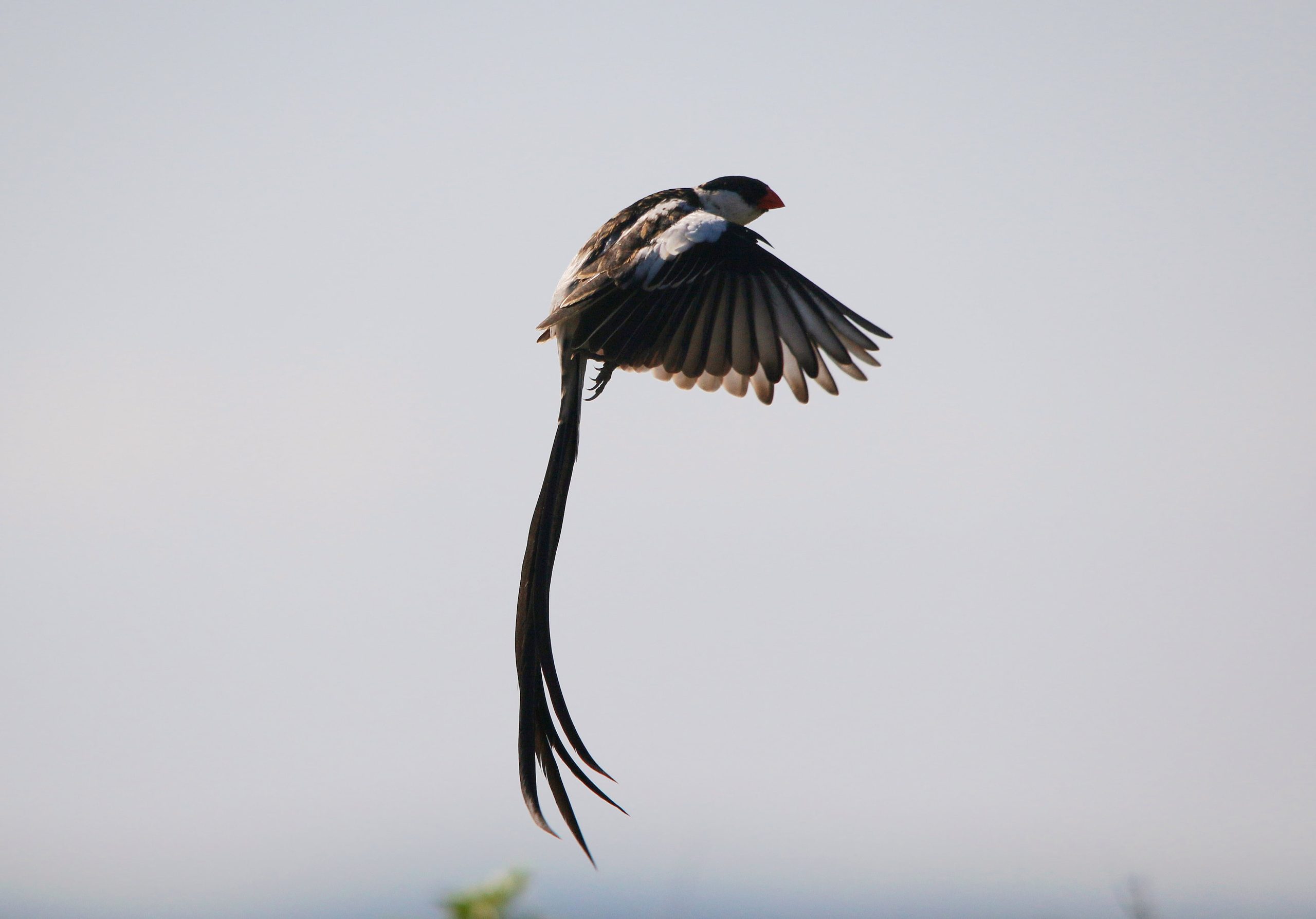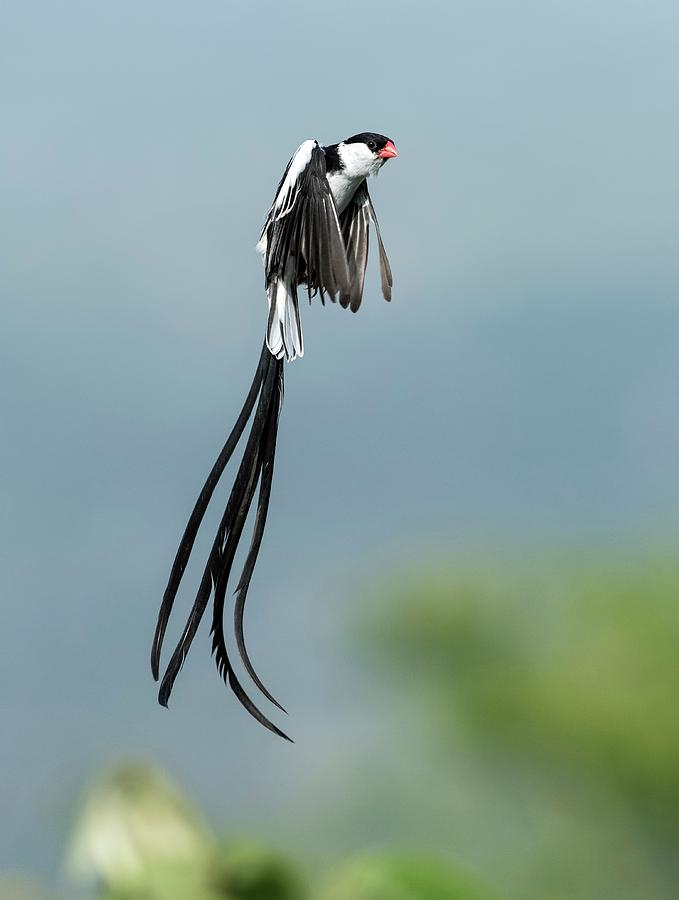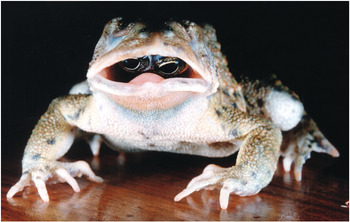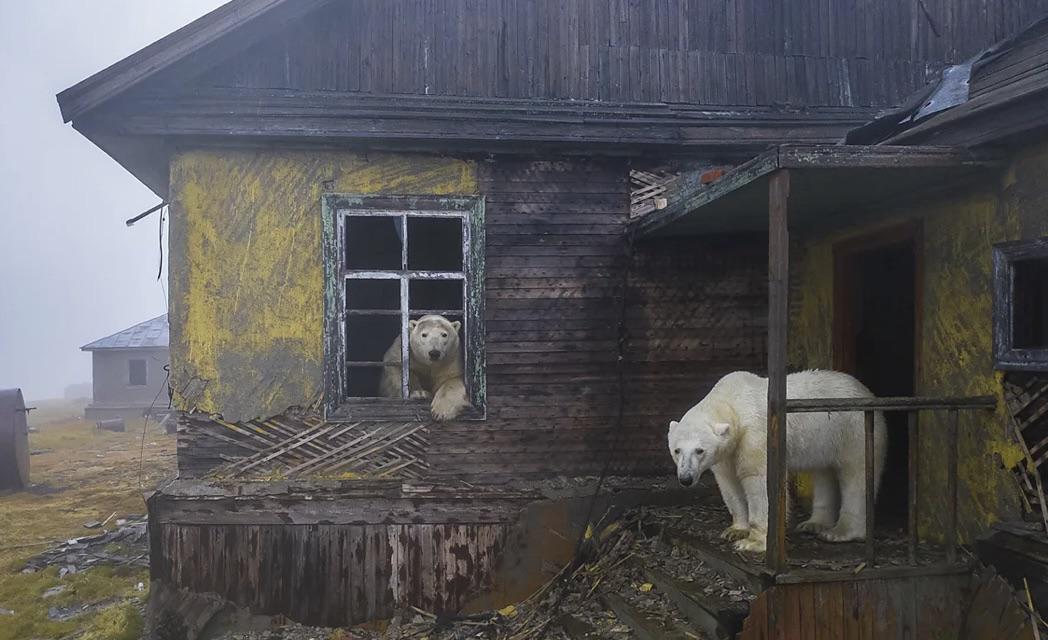In the world of avian courtship displays, few performances rival the breathtaking aerial acrobatics of the male Pin-tailed Whydah. These small yet striking birds, native to sub-Saharan Africa, have evolved one of nature’s most dramatic and visually arresting mating rituals – a spectacular flight display that transforms this otherwise modest-looking bird into a true artist of the skies.
For most of the year, the Pin-tailed Whydah (Vidua macroura) resembles many other small finch-like birds, with a compact body and unremarkable plumage. However, during breeding season, the male undergoes a remarkable transformation. His body remains predominantly black and white, but his tail feathers grow to extraordinary lengths – often reaching four times his body length.
These elongated tail feathers – the “pin-tails” that give the species its name – are not merely decorative. They become the centerpiece of what might be described as nature’s most elegant aerial ballet, a performance that reveals the paradoxical strength and grace of these seemingly delicate birds.
When a male Pin-tailed Whydah spots a potential mate, he launches into a spectacular flight routine that showcases both his physical prowess and the aesthetic beauty of his tail feathers. The display typically follows a carefully choreographed sequence:
First, the male ascends rapidly, gaining considerable height above the savanna or grassland. With his extraordinary tail feathers trailing behind him like streamers, he then begins a series of swooping, undulating flights. Each dive and rise creates a rippling effect in his long tail, producing a mesmerizing visual spectacle.
The most impressive part comes when he hovers momentarily before making sharp, dramatic changes in direction, causing his tail to flutter and shimmer in the sunlight. These aerobatic maneuvers require exceptional strength and control, particularly considering the aerodynamic challenge posed by those lengthy tail ornaments.
From an evolutionary perspective, the Pin-tailed Whydah’s extravagant display represents a classic example of sexual selection. The elongated tail feathers are what biologists call a “handicap” – they make everyday survival more difficult, requiring more energy for flight and potentially increasing visibility to predators.
However, this is precisely why they serve as such honest signals of male quality. Only the healthiest, most genetically fit males can afford to grow such extraordinary plumage and still survive. Furthermore, only the strongest and most skilled flyers can perform impressive aerial displays while handicapped by these unwieldy appendages.
Female whydahs have evolved to recognize these signals, preferentially mating with males that demonstrate the most spectacular aerial performances. This selective pressure has pushed the evolution of increasingly elaborate tails and flight displays over countless generations.
Adding to the intrigue of the Pin-tailed Whydah is its reproductive strategy. Beyond their remarkable courtship displays, these birds are brood parasites – similar to cuckoos, they lay their eggs in the nests of other bird species, particularly waxbills and finches.
This reproductive strategy adds another dimension to the importance of the male’s display. Since whydahs don’t build nests or raise their own young, the female’s primary investment in reproduction is selecting a mate with the best genetic qualities. The aerial display and magnificent tail serve as the primary evidence of those qualities.
While Pin-tailed Whydahs remain relatively common across their native range in sub-Saharan Africa, they face the same threats as many bird species – habitat loss, climate change, and in some areas, capture for the exotic pet trade.
The impressive courtship display has made these birds popular in aviculture, and in some regions, they have been introduced outside their native range. In Florida, California, and parts of the Caribbean, established populations of Pin-tailed Whydahs now exist, raising potential concerns about their impact as an invasive species and brood parasite.
The Pin-tailed Whydah’s extraordinary courtship flight represents one of nature’s most perfect examples of evolutionary artistry. Through countless generations of female choice, these birds have developed a performance that merges athleticism with aesthetics, strength with grace.
Their aerial ballet serves as a reminder of the remarkable power of sexual selection to produce extravagant beauty – a process that has filled our world with countless natural wonders that, like the flowing tail and acrobatic flights of the male Pin-tailed Whydah, continue to captivate and amaze us.
